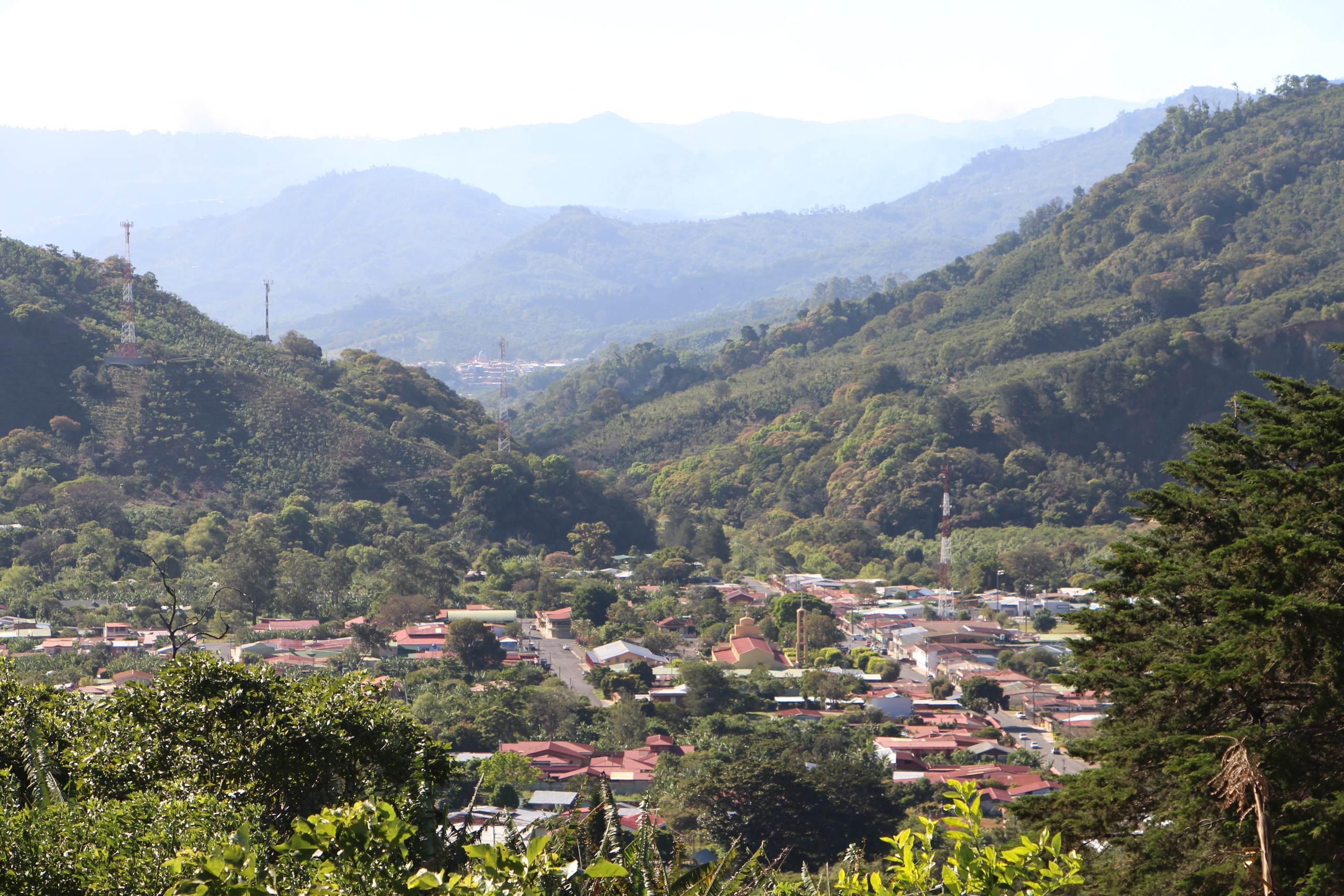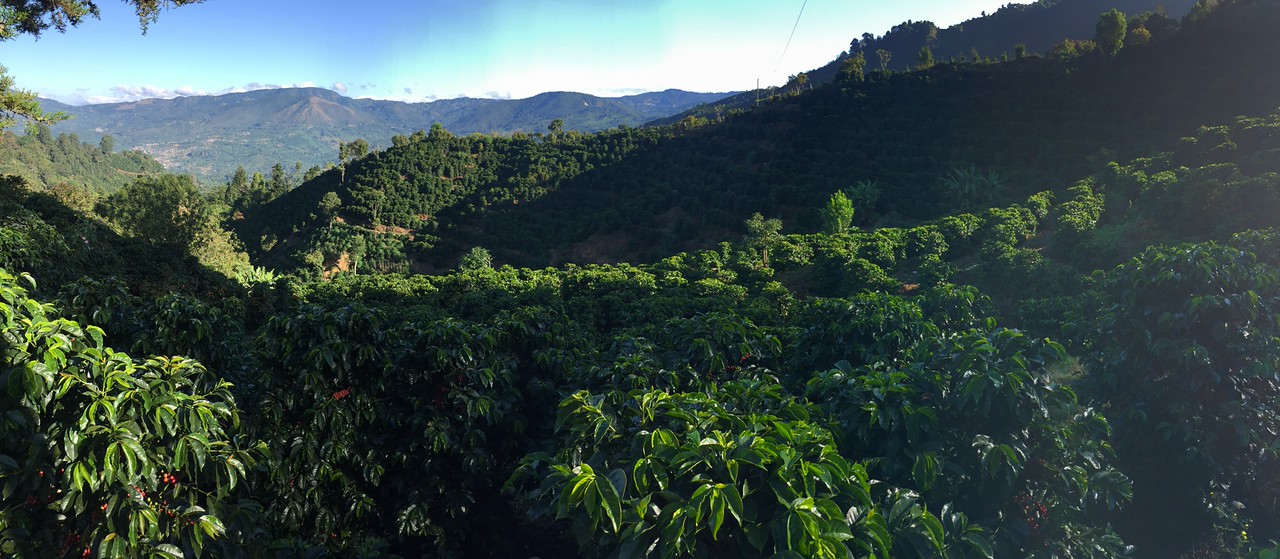Our fresh crop Costa Ricans have landed in our warehouse in New Jersey. 🙌 Whether you are looking for honeys that pop or a Geisha that stuns, we got you covered. View our North American Offer List here.
We all know there’s a lot to love about Costa Rica. Whether it’s the lush mountains from a picture or the promise of adventure in a tourism catalog, we already feel close ties to this coffee origin. We may even have been fortunate enough to experience these things first hand.
But as coffee connoisseurs, makers and sourcers we have come to love Costa Rica for one thing – it’s generosity in complex and mouth-watering coffees.
Just ask Marianela, or Nela, our Costa Rican product coordinator. She is constantly impressed by her own neighbors that have been willing to push boundaries in coffee processing and bring the absolute best crops to the table.
Get to know Nela

Born in: Cartago, Costa Rica
Currently living in: Costa Rica
Favorite coffee brew method: V60
Favorite coffee shop in Costa Rica: Kawah Cafe
Favorite city to visit in the States: San Francisco
“What I love the most about Costa Rican coffees,” says Nela, “is that you can find a good variety for different taste preferences that are really amazing: clean, sweet, fruity, floral and bright, balanced acidity coffees.”
The exceptionally sorted and processed coffees of today enjoy breaking the perception of Costa Rican coffees to the masses. But for Nela it’s also the ease of traceability that makes these coffees so rewarding.
“It’s easier to have all of the traceability and information about these coffees today,” she says. “Costa Rica is probably one of the most developed origin countries in the world and people can have access to the story behind each coffee which makes it all so unique and interesting.”

Stories like the women of La Angostura are within reach for the importers, roasters and ultimately consumers. While access to producer stories are increasingly more common across all origins, few factors help it make it even easier in Costa Rica such as geographical location, ease of languages, and the safety of travel.
Better quality coffees are also the result of better infrastructure within the industry and education amongst producers says Nela. It’s what allows producers to be more progressive in their approach to coffee. But this was not always the case.
“Around ten years ago farmers weren’t sure about preparing micro-lots,” explains Nela. “They were scared and didn’t know if it was a good idea to make the change and start to process their own coffee.”

“But it was around five years ago when the oldest micro-mills were becoming successful and farmers began to realize it was a good decision for those who want to do coffee differently. More producing families are taking that step and even more than that they are starting to specialize, experiment and be creative on preparing unique micro and nano lots.”
Out of all of the crops from this past harvest, Nela is excited for people to try “every single one” of these coffees. But If she had to chose (under pressure of the author) she would say: El Congo and Hondura from Santa Teresa, Santa Rosa Don Eli White Honey and the double washed trials Don Eli (her family’s farm) made, and the Coffee Diversa coffees.
These Coffee Diversa coffees are special in that they are from non-common varieties in Costa Rica and are from the largest private garden with the most varieties in the world (You can learn more about these unique coffees on our Cropster Hub store – one for our U.S. available coffees and one for our European available coffees – underCosta Rican coffees .)
Challenges From the Harvest
This harvest Nela’s challenge was a good problem to have.
“There are always challenges and that’s what exciting for me otherwise, it would be boring.”
When first initiating the partnership between her family’s farm, her community, and Nordic Approach a year ago she had no idea how it would be received.
“This is the second year we are doing this [sourcing coffees collectively] so it’s a pretty new project,” she says.

“I wasn’t expecting to receive so much acceptance and interest from producers to negotiate and start a relationship with us [Nordic Approach]. I was expecting something similar to last year or a little bit more – but no, it was three times more.”
“Sometimes I want more sleep. But it’s okay – I love what I do!”
This harvest demanded a lot from Nela. When she wasn’t cupping coffees from farms throughout the region, she was visiting the farms and looking over the processing. And if she wasn’t physically on a neighbor’s farm, she was collecting the coffee’s information, preparing shipment and sending hundreds of samples to Oslo for quality control.
“We ended up purchasing around 70 micro and nano lots,” she says.
“Therefore for me [the increase in volumes and coffees] was a big change. I needed better organization, stronger communication among the farmers, the logistics company and with the dry milling.”
“In the end, it’s been definitively a learning process for me and everybody involved in this project.”
Honeys

“People ask me mostly about the honey-processed Costa Rican coffees,” says Nela.
The honey process is one of the latest and most popular processing methods in the region due to its fruit-forward and unique flavor characteristics in the coffee. And many inquire about the different honey processes – red, white, yellow, and black (and potentially more colors in between.)
“They want to know the differences between the different type of honeys. And it’s always funny because there is really not a formula or a recipe to how the different honeys are processed. It depends on each producer and his or her conditions in the mill.”
“Basically, some farmers call it “white” honey when they remove almost all mucilage from parchment or they call “black” honey when they don’t remove any mucilage. And when they mechanically de-pulp, they can adjust the levels of mucilage removed but it varies on the machine.”
“When the parchment dries, it turns into different colors (yellow, orange, red, black), because of the sun hitting the mucilage at different layers. And so they also sometimes name it a type of honey depending on how the color turned out. Some people think this is not very accurate and it’s not the correct way to name the type of honey.”
Producer Highlights

Nela would like to highlight some of the female producers like La Angostura who has three amazing hard working girls: Arleen, Maria (Mario Jimenez’ daughters) and Ana Lidey (Mario’s wife). Since they started their relationship with Nordic Approach they are motivated to work harder at developing their coffees, says Nela.
“It’s not easy to find women doing what they are doing and I really admire them. I hope I can support them and motivate them to keep doing what they are doing.”
“They did more separation of the lots and experiments with the double washed process just for us,” she says. “We have seen great results from what they have done and we really like to support the courage girls like they have. It’s not easy to find women doing what they are doing and I really admire them. I hope I can support them and motivate them to keep doing what they are doing.””
Also, we purchased some lots for the first time from Daniela Gutierrez from La Montana-Bajo del Rio micro-mill. This is another great example of young ladies making the difference in our communities.”
Featured Coffees:
For North American Buyers: 🇺🇸 🇨🇦
Adrian Hernandez Libertad Natural (US)
Notes: Fruity, Cinnamon, Blueberry
Bold in fruits, excellent body.
Score: 88
Santa Teresa Geisha White Honey (US)
Notes: Tropical Fruit, Strawberry, Floral, Passion Fruit
Bright, tropical fruit, passion fruit, high sweetness, clean and elegant. Great funk, strawberry jam and florals.
Score: 88.5
Vista del Lago white Honey (US)
Notes: Citrus, Floral, Pear, Apple
Fizzi, almost sparkling and very refreshing. Citrus, apples, and jasmine. Super bright and crisp.
Score: 88
Notes: Chocolate, Mild Cocoa, Sweet Milk, Red Fruit, Honey and Toffee.
Fruit driven, but very clean and bright with a sweet finish.
Score: 87
Santa Rosa Don Eli White Honey
Notes: Fresh Citrus, Fruit Citrus, Lemon, Papaya,
Peach juice, fresh and citrus fruit, structured, great clarity.
Score: 88
Notes: Sweet Berry, White Grape, Nectarine.
Sweet and juicy with a delightful aftertaste that lingers
Score: 87
Notes: Chocolate Stone Fruit Dried Fruit Milk Chocolate
Score: 86



0 Comments